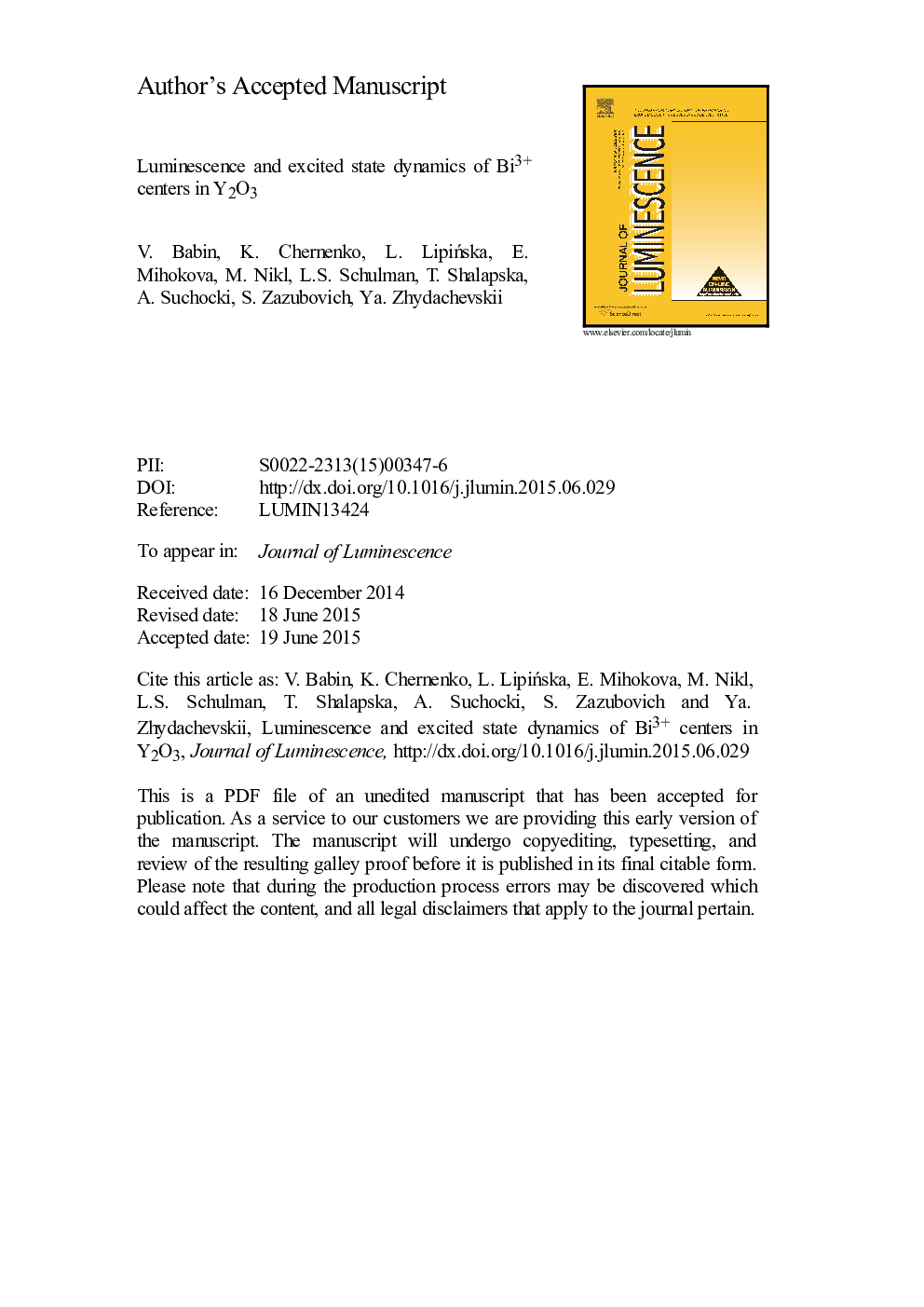| Article ID | Journal | Published Year | Pages | File Type |
|---|---|---|---|---|
| 5398807 | Journal of Luminescence | 2015 | 38 Pages |
Abstract
Photoluminescence of Y2O3:Bi nanopowder synthesized by the modified sol-gel method is studied using time-resolved luminescence spectroscopy in the 4.2-300Â K temperature range. Bi3+ ions are substituted for Y3+ ions in two different crystal lattice sites, one having S6 symmetry (Bi(S6)) and the other C2 symmetry (Bi(C2)). The luminescence characteristics of these two centers are found to have strongly different electron-phonon interactions. The luminescence of Bi(S6) and Bi(C2) centers peak at 3.04Â eV and 2.41Â eV, respectively, and arise from the radiative decay of the triplet relaxed excited state (RES) of Bi3+ ions. The model and structure of the RES, responsible for the luminescence of Bi(S6) and Bi(C2) centers in Y2O3:Bi, as well as radiative and nonradiative processes, taking place in the excited states of these centers, are investigated. The parameters of the triplet RES (the separation between the metastable and radiative levels and probabilities of radiative and nonradiative transitions from these levels) are determined. Low-temperature quenching of the triplet luminescence of these centers is explained by nonradiative quantum tunneling transitions from the metastable minima of their triplet RES to closely located defect- or exciton-related levels.
Related Topics
Physical Sciences and Engineering
Chemistry
Physical and Theoretical Chemistry
Authors
V. Babin, K. Chernenko, L. LipiÅska, E. Mihokova, M. Nikl, L.S. Schulman, T. Shalapska, A. Suchocki, S. Zazubovich, Ya. Zhydachevskii,
